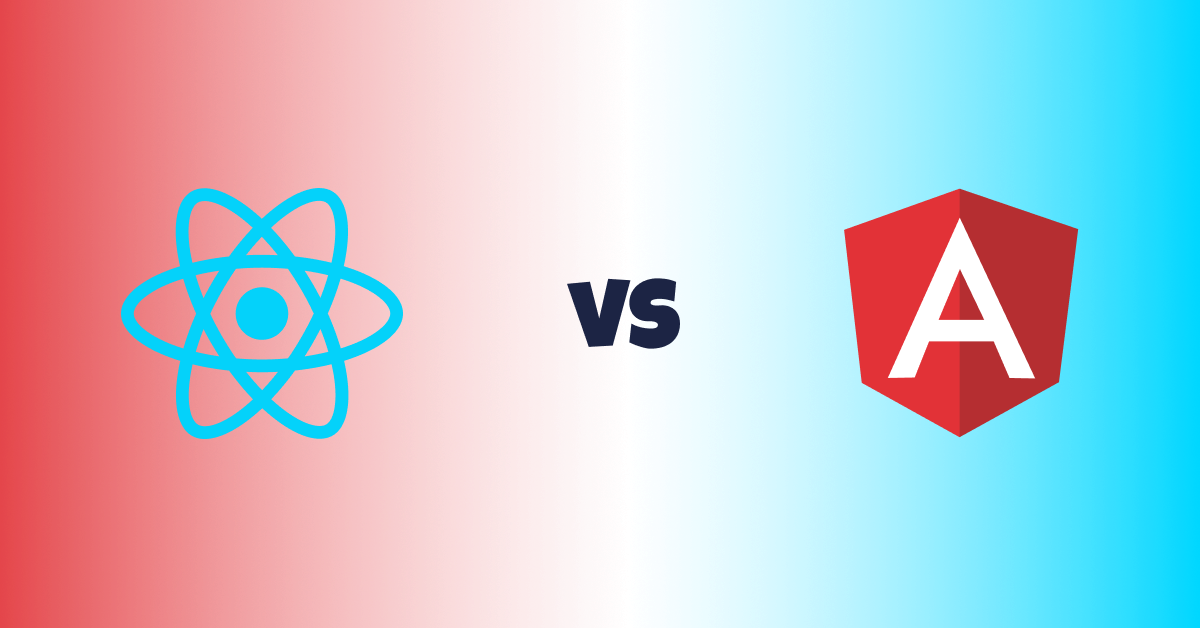
Choosing the right toolkit for building web applications is an important decision. Two of the most popular options today are React and Angular. Both have strong corporate backing—React by Facebook and Angular by Google—and both power many large-scale apps. However, they take different approaches and fit different needs. In this extended guide, we’ll cover everything you need to know, explained in simple words.
1. Why This Choice Matters
When you start a web project, you want code that’s easy to write, easy to read, and easy to update. You also want good performance so users don’t wait, and a solid set of tools to help you debug, test, and deploy. Picking React or Angular shapes how you learn, how you build features, and even which additional libraries you might use. A good match can speed up development and keep your team happy.
2. Origins & Roadmap
React’s Journey
- 2013: Facebook released React to solve slow page updates in their app.
- Virtual DOM: Its core idea was a fast, in‑memory copy of the page structure that updates only what changed.
- Fiber: In 2017, React Fiber improved how changes are scheduled, giving better user experiences.
- Evolving: React adds features like Hooks (2019) which make state and side‑effect management simpler.
Angular’s Journey
- AngularJS (2010): The first version, also by Google, popularized two‑way binding but had performance limits at scale.
- Angular (2016): A full rewrite in TypeScript, designed for large apps.
- Ivy Renderer (2019): A new rendering engine that makes apps smaller and faster, plus better debugging.
- Continuous: Angular maintains a regular release schedule, with clear upgrade paths via the Angular CLI.
3. Core Concepts & Architecture
| Feature | React | Angular |
|---|---|---|
| Type | Library (UI only) | Full Framework (UI + tools) |
| Language | JavaScript + JSX | TypeScript (JavaScript + types) |
| Templates | JSX (HTML in JS code) | HTML templates with Angular directives |
| Components | Independent, reusable functions | Components + NgModules for grouping |
| Data Binding | One‑way by default; two‑way optional | Two‑way binding built in |
| State | External libraries or Context API | Services + RxJS Observables |
| DOM Updates | Virtual DOM diffing | Change detection on Real DOM |
| Project Setup | Minimal; add what you need | All tools ready via Angular CLI |
4. Getting Started: Setup & Tooling
React Setup
npx create-react-app my-react-app
cd my-react-app
npm startThen add libraries you need:
npm install react-router-dom(Routing)npm install redux react-reduxor use Context API (State)- Any CSS solution: modules, styled-components, or plain CSS (Styling)
Angular Setup
npm install -g @angular/cli
ng new my-angular-app
cd my-angular-app
ng serveAngular CLI also lets you generate:
- Components:
ng generate component header - Services:
ng generate service user - Modules, routing, and more—everything’s wired up.
5. Learning Curve & Developer Experience
| Aspect | React | Angular |
|---|---|---|
| Beginners | Easier if you know JS & HTML | More concepts at once (TypeScript, RxJS, Decorators) |
| Typing & Safety | Optional with TypeScript | Mandatory TypeScript checks errors early |
| Setup Effort | Quick start, but manual opt‑ins | Longer, but automated by CLI |
| Documentation | Community tutorials + docs | Official docs + CLI help messages |
| Upgrades | You manage dependencies | ng update guides you |
6. Performance & App Size
React
- Virtual DOM: Updates only changed parts.
- Bundle Size: Core is small (~30 KB gzipped).
Angular
- Change Detection: Scans components; Ivy makes it faster.
- AOT Compilation: Pre‑compiles templates for speed.
- Bundle Size: Larger (~150 KB gzipped), optimized by tree‑shaking.
Tip: Use code splitting, lazy loading, minification, and asset optimization for both frameworks.
7. State Management & Data Flow
React Options
- Context API (built-in)
- Redux
- MobX
- Recoil/Zustand
Angular Approach
- Services (singleton classes)
- RxJS Observables (data streams)
- NgRx (Redux-style for large apps)
8. Ecosystem & Community
- React: ~200k GitHub stars, vast npm packages, many tutorials and meetups.
- Angular: ~90k GitHub stars, official @angular packages, enterprise-focused conferences.
9. Real‑World Examples
- React‑Powered: Facebook, Instagram, Netflix, Airbnb, Twitter Lite.
- Angular‑Powered: Google Ads, Microsoft Office Online, Upwork, Forbes.
10. Testing & Debugging
React
- Jest
- React Testing Library
- Storybook
Angular
- Karma + Jasmine
- Protractor / Cypress for E2E
- Angular DevTools (browser extension)
11. SEO & Server‑Side Rendering
- React: Next.js, Gatsby.
- Angular: Angular Universal.
12. Mobile & Cross‑Platform
- React: React Native.
- Angular: Ionic, NativeScript.
13. Upgrades & Maintenance
- React: Backward-compatible, you choose when to upgrade.
- Angular: Regular releases,
ng updateautomates migrations.
14. Cost & Learning Investment
- React: Low barrier if you know JavaScript.
- Angular: Higher upfront learning (TypeScript, RxJS), but structured payoff.
15. When to Choose Which
| Scenario | Pick React | Pick Angular |
|---|---|---|
| Small, fast prototype | ✓ | |
| Full built-in solutions | ✓ | |
| Team knows JavaScript | ✓ | |
| Large enterprise app | ✓ | |
| Cross-platform mobile | ✓ (React Native) | ✓ (Ionic/NativeScript) |
16. Best Practices & Tips
- Keep components small and focused.
- Use lazy loading and code splitting.
- Write unit tests early.
- Follow style guides (ESLint/Prettier or TSLint).
- Optimize images and assets.
- Monitor performance (Lighthouse, DevTools).
17. Future Trends
- React: Concurrent features, server components, new state libraries.
- Angular: Ivy improvements, performance optimizations, better DX.
Conclusion
React and Angular each bring powerful tools for building modern web applications:
- React: Flexible, lightweight, vast ecosystem, friendly for JavaScript developers.
- Angular: Structured, full-featured, strong TypeScript support, ideal for large teams.
Your final choice depends on project size, team skills, performance needs, and personal preferences. Whichever you pick, you’ll join a vibrant community and build great user experiences. Happy coding!
